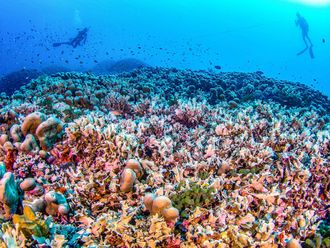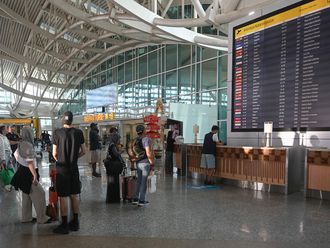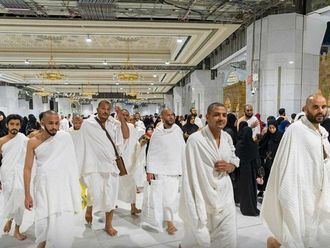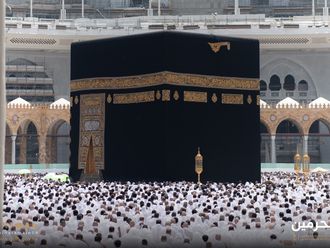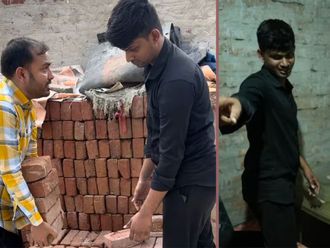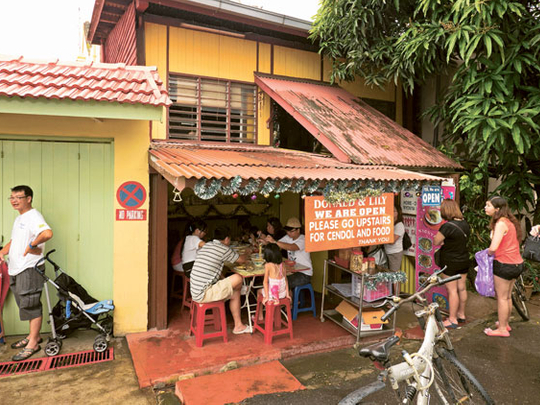
The city of Malacca (known as Melaka in Malay) also happens to be Malaysia's third smallest state. With tourism as its second major source of revenue after manufacturing, Malacca is implementing an ambitious project called Arab City with which the city administration hopes to lure high-spending Arab tourists.
The quaint city, whose population comprises Malays, Chinese and Indians, with a sprinkling of Eurasians, is veritably a melting pot of diverse cultures, traditions and cuisines. Each ethnic group, while maintaining its individual character, is unable to hide the influence of the other groups.
Thanks to its colonial past, the city's countenance is pocked by European-styled domes and churches that coexist with Buddhist temples and mosques. Although the number of Arab tourists visiting this former Dutch-Portuguese enclave in the past has not been exceptionally high, Malacca's tourism planners see good potential to lure high-spending tourists from the Gulf and other parts of the Middle East. So Arab investors have teamed up with local partners to jointly develop the Arab City on the reclaimed island of Pulau Melaka, off the Bandar Hilir coast. Golden Corporate Heritage Sdn Bhd, a local developer, recently unveiled plans for the Arab City that would house Arab-themed restaurants and cafés, a museum that would present a kaleidoscopic view of the Arab world, an Arab bazaar and shops, and a health and beauty spa for men and women on the 1.7-hectare island. An investment of 400 million ringgit (Dh478 million) has reportedly been allocated for the Pulau Melaka project.
Malacca's Chief Minister Datuk Seri Mohammad Ali Rustam has said that the project would be the first phase of Malacca's Arab City plan, which also envisages setting up similar concepts at two other major locations in the city.
The chief minister, who hopes to see Malacca "in the eye of the world", believes that the development of the Arab City would attract more Middle Eastern tourists to the country and also to Malacca, which received a total of 26,160 tourists from the region last year.
Malacca was a peaceful and important trading port for about a century. Traders came from as far as Arabia, India and China. But then came the "whirlwind", as locals then described the onset of the European colonialism. The Portuguese captured Malacca in 1511 and ruled for 130 years (until 1641) before the Dutch took over and ruled for 183 years (1641 to 1824). This was followed by British rule for 133 years (1824 to 1957) with a break in between under Japanese occupation (1942 to 1945).
Malaccan officials told Weekend Review that the aim behind the Arab City, the first such initiative, was also to create a bridge between the Arab world and Malacca and Malaysia, and thus promote tourism, trade and cultural exchanges between the two sides. "Visitors to the Arab City will be able to enjoy some of the very best elements the Arab world has to offer. Arab City is a one-stop centre for visitors, who will be able to scour bazaars laden with Arab goods and wares, dine on delectable regional Arab fare, and savour the experience of having visited a place that's unique in character," explained Wira Latiff, chairman/CEO of the State Tourism, Culture and Heritage Committee of Malacca.
Malacca's proximity to the capital Kuala Lumpur — it is just 147 kilometres away — is also being played up by the state's tourism planners who are aware that Kuala Lumpur is a favourite city in South East Asia for Arab companies setting up regional and representative offices. Malaccan officials tend to highlight the "long history" which Malaysia and the Arab world share, dating back to the advent of Islam in the country.
Malaysia's hospitals and other medical facilities hope that the Arab City would provide a strong impetus to medical tourism from the Gulf and other parts of the Middle East. "Malacca has a lot to offer to the Arab world … particularly in areas of health care, food security, infrastructure development and information and communications technology," Latiff said.
He added that Arab tourists like to come to Malacca because of a number of factors that give the visitors a "feel-at-home" comfort. "They get here halal food, medical facilities, hospitable environment, etc." The Arab City is expected to be completed by June 2012, but it might take longer.
However, questions have been asked over the money and resources spent on the Arab City. Internet chatter has dwelt on why Malacca is "bending backward" to get Arab tourists. Why not build theme parks dedicated to the Malayan, Chinese and Indian communities rather than to Arab tourists?
These netizens noted that the Arab Street in Kuala Lumpur's busy shopping centre Bukit Bintang, aimed to make Arabs "feel at home", had not been much of a success. The number of Arab restaurants that once dotted the Arab Street has declined with many local people, instead of Arabs, now seen smoking the shisha. They want Malacca to promote its own rich culture, cuisine and history rather than pander to Arab tourists.
Manik Mehta is a commentator on Asian Affairs.




